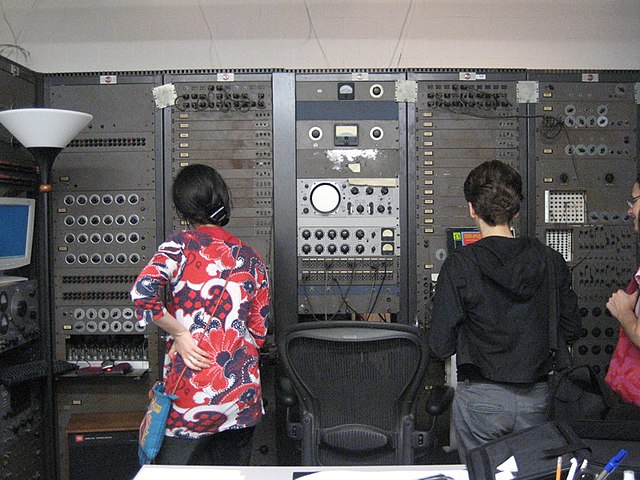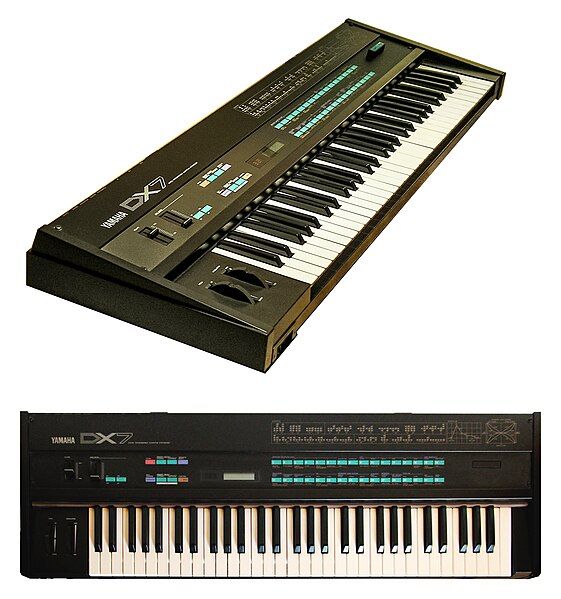RCA Mark II Sound Synthesizer
The RCA Mark II Sound Synthesizer was the first programmable electronic synthesizer and the flagship piece of equipment at the Columbia-Princeton Electronic Music Center. Designed by Herbert Belar and Harry Olson at RCA, with contributions by Vladimir Ussachevsky and Peter Mauzey, it was installed at Columbia University in 1957. Consisting of a room-sized array of interconnected sound synthesis components, the Mark II gave the user more flexibility and had twice the number of tone oscillators as its predecessor, the Mark I. The synthesizer was funded by a large grant from the Rockefeller Foundation.
RCA Mark II
Closeup of Victor that lives up at Columbia Computer Music Center
Victor in 2007
A synthesizer is an electronic musical instrument that generates audio signals. Synthesizers typically create sounds by generating waveforms through methods including subtractive synthesis, additive synthesis and frequency modulation synthesis. These sounds may be altered by components such as filters, which cut or boost frequencies; envelopes, which control articulation, or how notes begin and end; and low-frequency oscillators, which modulate parameters such as pitch, volume, or filter characteristics affecting timbre. Synthesizers are typically played with keyboards or controlled by sequencers, software or other instruments and may be synchronized to other equipment via MIDI.
Early Minimoog by R.A. Moog Inc. (c. 1970)
Robert Moog with Moog synthesizers. Many of Moog's inventions, such as voltage-controlled oscillators, became standard in synthesizers.
The Minimoog, introduced in 1970, was the first synthesizer sold in music stores.
The Yamaha DX7, released in 1983, was the first commercially successful digital synthesizer and was widely used in 1980s pop music.







